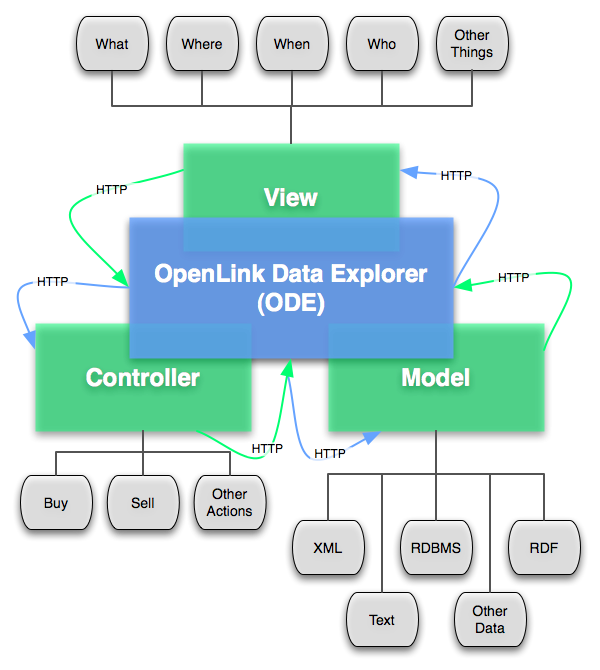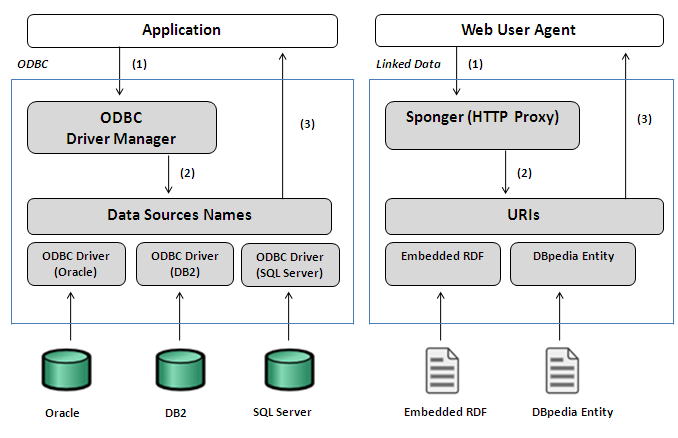The best way to learn how this extension can help you is to install it, and follow along with the examples below. If you decide you can't
benefit by exploiting the Linked Data Web in this way, you can un-install the extension without harm.
Download
The OpenLink Data Explorer can be downloaded from one of the following locations
Installation
The loading of the OpenLink Data Explorer tool differs slightly depending on which method was using to download it.
- From the Mozilla Add-ons site, click on "Add to Firefox", Firefox will then install the Extension as an "Add-on".
- From the OpenLink Web Site, download the "ode.xpi" file and load from the "Open File" menu item of the Firefox "File" menu.
- From the Amazon S3 Storage Site, you will immediately be presented with the option to install the ODE add-on.
- From the Softpedia Web Site, download the "ode.xpi" file and load from the "Open File" menu item of the Firefox "File" menu.
The OpenLink Data Explorer Firefox Add-ons installation dialog will then be presented.

You will need to restart Firefox after it has finished installing.

Once it has finished restarting, you should see the extension in your add-ons list.
Configuration
To reach the preferences panel for the OpenLink Data Explorer Extension. Go to the "Tools" menu and
Click on "Add-ons". Then select "OpenLink Data Explorer" and click on the "Preferences" button.
There are two tabs for configuration:
- The "Viewers" tab
- The "RDF Data Access" tab
The Viewers Tab
The default Viewer ("OpenLink Data Explorer (default)") is built into
the Browser Extension, and therefore provides the smoothest browsing experience.
You can change the RDF Viewer to use any available server which has the right
capabilities.
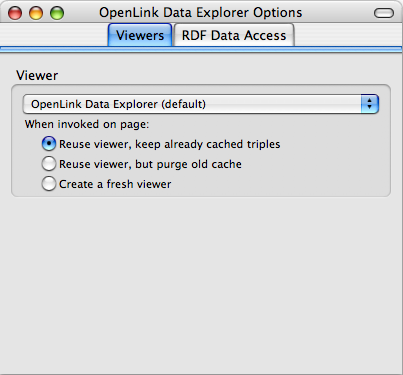
Several known-compatible viewers are offered by the "Viewer" drop down menu as shown below:
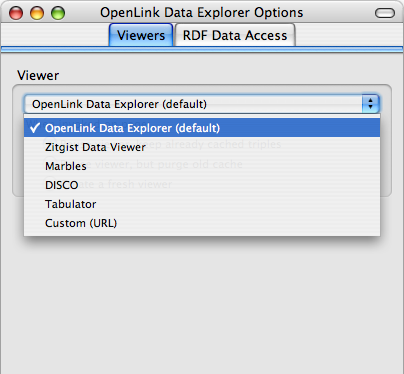
"Custom (URL)" allows for any third party viewer you wish to use. The
image below shows a custom URL configuration, which targets the
OpenLink AJAX Toolkit-based ODE viewer
on the OpenLink-hosted bbc.openlinksw.com server.

The RDF Data Access Tab
The RDF Data Access tab is used for specifying the location of the
RDF sponger cartridges to used for sponging the RDF available data from the
request URL, and by default uses the Virtuoso sponger cartridges hosted on
the OpenLink linkeddata.uriburner.com server or this can be changed to use a Virtuoso instance of ones choice
where the require sponger cartridges are loaded, as indicated in the diagram below:
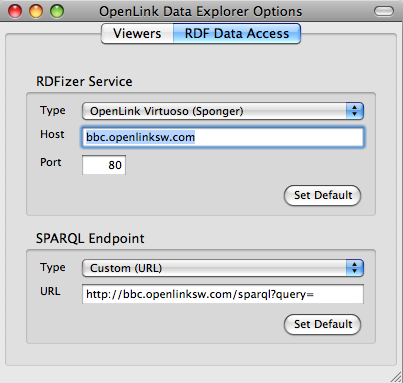
The "RDFizer Service" drop-down menu includes entries for known-supported RDF services that can be used for sponging data:
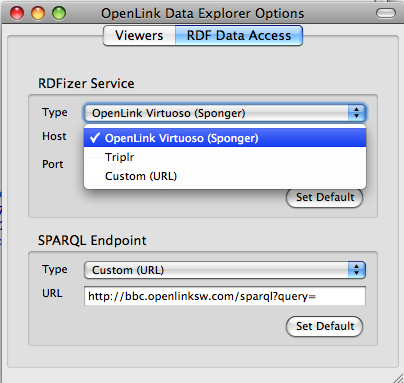
"Custom (URL)" allows for any third party RDFizer you wish to use,
following the form "http://server:port/proxy?url=". The
image below shows a custom URL configuration, which targets the
Virtuoso Sponger on the OpenLink-hosted bbc.openlinksw.com server.
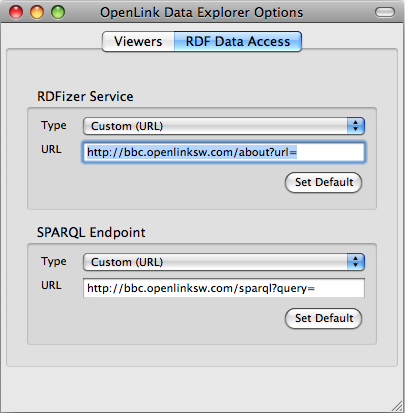
The "SPARQL Endpoint" drop-down menu gives choice between a Virtuoso
endpoint, or a custom URL, as indicated below:
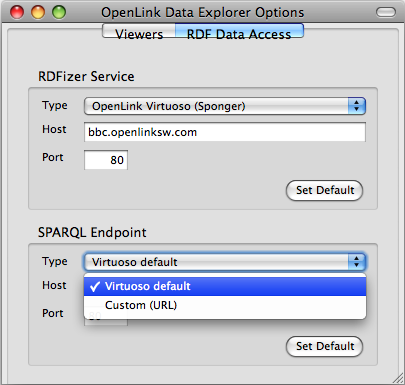
-
Virtuoso default
-
Custom (URL)
"Custom (URL)" allows for any third-party SPARQL Endpoint you may wish
to use, following the form "http://server:port/sparql?query=".
The image below shows a custom URL configuration, which targets the
Virtuoso SPARQL Endpoint on the OpenLink-hosted bbc.openlinksw.com server.

